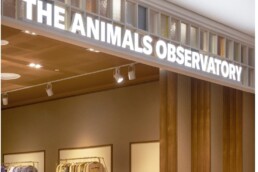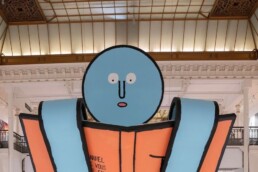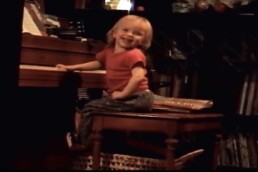Last summer we stumbled upon an unlikely relic, the Tado Ivanausko Zoologijos museum in Kaunas Lithuania. Here is a splendidly preserved time capsule of a natural history museum. It seemed like the entire animal kingdom in taxidermy, hidden away in a cabinet of curiosities that felt like it had not been opened since the Iron Curtain fell. We were practically the only people in the place. It was thrilling.
Thrilling in much the same way that New York’s American Museum of Natural History, Musee de la Chasse et de La Nature in Paris, or the Pitt Rivers Museum in Oxford are. All of it to scale, real animals and objects with the immediacy of something you can reach out and touch. The glass cases are works of art, still lives rendered in three dimensions. Stepping in front of the the splendid wildlife dioramas feels like there’s only a pane of glass separating you from close encounters in distant lands. It’s almost like teleportation. The best of the exhibits we saw in Kaunas made start in surprise, or the hair stand on end as these inanimate scenes triggered some primordial fight or flight reflex. We provided the animation ourselves!
Dioramas are decidedly old school in a digital age. It’s perhaps that much more surprising then that they can prompt such a visceral response in young viewers accustomed to learning from screens. There’s something particularly enchanting about the verisimilitude and the mesmerising trompe-l’oieil techniques that never tires. So it was encouraging to discover that it’s not a dying art after all.
Science illustration, in the manner of Charles Darwin and John James Audubon, is alive an well. Jane Kim is one such practitioner, and having completed a marvellous mural of migratory animals, she hopes that her approach will bring new relevance to the educational art that inspired her, but is also widely considered antiquated today. Many museums are racing to deploy interactive digital displays to draw visitors. When the initial ‘wow effect wears off, will these have the same lasting impact as witnessing the whale in the Hall of Ocean Life in New York? Like the CGI renderings in Hollywood’s Night at the Museum, these may end up looking more like a travesty of the reality they seek to represent.
Whatever the medium, here’s to the pursuit of wonder. “…Whilst this planet has gone cycling on according to the fixed law of gravity, from so simple a beginning endless forms most beautiful and most wonderful have been, and are being, evolved.” From Aristotle’s early explorations, through Darwin’s drawings, the glass flowers of Blashka & Son, and even the art of Walton Ford, close observation of the natural world is a revelation. That’s worth seeking out in any museum setting. Or better yet, get out into the wild. It is one of a kind, and it is completely analog.
Romas Viesulas
I divide my time between home in Portugal – taking road trips to Latin America in search of investment opportunities – and London, where I often present the current affairs programme on Monocle 24 Radio. For Pirouette, I'll take my inspiration from The Swiss Family Robinson. Life with kids is certainly an adventure. It can seem easy to feel shipwrecked however on the high seas of a rapidly changing, ever more globalised world. How can we ensure our children have the tools they need to survive, even thrive?
Subscribe to Pirouette's monthly Newsletter.
You might also like
October 24, 2024
A Day in the Life… Margaux Giudicelli, Loumio
A day in the life of a kids' swimwear brand owner. Looking for new sustainable swimwear to offer your customers. Well check out eco-friendly, stylish, and protective children’s swimwear for a…
October 21, 2024
Shrimps x BINIBAMBA
Pirouette loves a good collaboration.Wrap your little ones up this holiday season with the nostalgia-tinged tones of the Shrimps x BINIBAMBA collection. Capture the cosiness of Christmas with…
August 23, 2024
Another new store opening for The Animals Observatory in South Korea.
A new store opening for The Animals Observatory in South Korea at Daejeon Shinsegae Art & Science:1 Expo -Ro, Yuseong-Gu Daejeon taking the number of store mon-brand stores to 4 in the country.…
February 29, 2024
Jean Jullien’s ‘Paper People’ at Le Bon Marche Rive Gauche, Paris
If you're in Paris make sure to pop into Le Bon Marche, Rive Gauche - there you will encounter two gigantic blue paper people created by Jean Jullien. Art set in a retail space ensuring an enhanced…
October 6, 2021
Pirouette kicks back into action
After being hacked & disabled we're back to bringing the whats what in Kid's fashion & lifestyle! Pirouette has been a little quiet for a while. In part at least because I've been working for…
February 24, 2021
Interview: Liz Sheppard, Creative Director
Katie talks to Liz Sheppard about her work as a freelance creative director. Liz has worked for more than 10 years, across women’s, men’s and children’s brands – including…
February 6, 2021
Interview: Ana Strumpf
Interview with creator and artist Ana Strumpf Katie talks with artist and illustrator Ana Strumpf about animated gifs, doodling, how her re.cover project impacted her career. Ana discusses…
October 2, 2020
A teaser trailer for Billie Eilish’s upcoming documentary!
‘The World’s a Little Blurry’ releases February 2021. Directed by filmmaker R.J. Cutler, Billie’s long-awaited Apple TV+ documentary finally has a name and a sneak peek. Well, sort off! The World’s…
August 27, 2020
Little Creative Factory AW20 collection ‘Unexpected Poetry’ launches today!
It's been a year since founder and designer of Little Creative Factory made the big move to the even bigger Apple with her lovely family. What a year it has been, there's no stopping this family…














